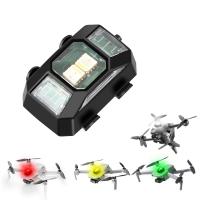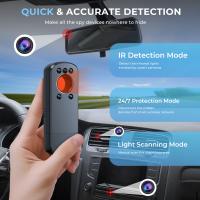How To Detect Hidden Cameras In Your House?
In today's world, privacy is a growing concern, and the idea of hidden cameras in your home can be unsettling. Whether you're renting a new place, staying in a hotel, or just want to ensure your personal space is secure, knowing how to detect hidden cameras is a valuable skill. This article will guide you through practical steps and methods to identify and locate hidden cameras in your house.
Understanding Hidden Cameras

Hidden cameras come in various shapes and sizes, often disguised as everyday objects such as smoke detectors, alarm clocks, air purifiers, or even electrical outlets. They can be wired or wireless, and some are equipped with night vision capabilities. The first step in detecting hidden cameras is to understand where they might be placed and what they might look like.
Visual Inspection

The simplest method to start with is a thorough visual inspection of your surroundings. Here are some tips to guide you:
1. Unusual Objects: Look for objects that seem out of place or have an unusual design. Hidden cameras are often disguised as common household items, so pay attention to anything that looks odd or out of the ordinary.
2. Small Holes or Lenses: Cameras need a clear line of sight to capture images. Look for small holes or lenses in walls, ceilings, or objects. These could be the camera's lens.
3. Wires and Cables: Check for any unusual wires or cables that don't seem to belong. While many hidden cameras are wireless, some still require power sources.
4. Lights: Some cameras have small indicator lights. Turn off the lights in the room and look for any small, blinking lights that could indicate a camera.
Using Technology

While a visual inspection is a good start, technology can significantly enhance your ability to detect hidden cameras. Here are some tools and methods you can use:
1. Flashlight Method: Turn off the lights in the room and use a flashlight to scan the area. Hidden camera lenses will often reflect light, making them easier to spot.
2. Smartphone Camera: Your smartphone can be a handy tool. Turn off the lights and use your phone's camera to scan the room. Some hidden cameras emit infrared light, which is invisible to the naked eye but can be detected by your phone's camera.
3. RF Detectors: Radio Frequency (RF) detectors can help locate wireless cameras by detecting the signals they emit. These devices are relatively affordable and can be purchased online or at electronics stores.
4. Network Scanners: If you suspect a hidden camera is connected to your Wi-Fi network, use a network scanner app to identify all devices connected to your network. Look for any unfamiliar devices that could be cameras.
Physical Inspection

In addition to visual and technological methods, a physical inspection can help you uncover hidden cameras:
1. Check Smoke Detectors and Alarm Clocks: These are common hiding spots for cameras. Remove the covers and inspect the insides for any unusual components.
2. Inspect Electrical Outlets and Light Switches: Hidden cameras can be placed inside electrical outlets or light switches. Carefully remove the covers and check for any hidden devices.
3. Examine Air Purifiers and Speakers: These devices often have enough space to conceal a camera. Open them up and inspect the interiors.
4. Look Behind Mirrors and Picture Frames: Cameras can be hidden behind mirrors or picture frames. Check for any signs of tampering or unusual thickness.
Professional Help
If you're still unsure or want a more thorough inspection, consider hiring a professional. Private investigators and security experts have specialized equipment and expertise to detect hidden cameras. While this option may be more expensive, it can provide peace of mind.
Preventive Measures
Once you've ensured your home is free of hidden cameras, take steps to prevent future intrusions:
1. Regular Inspections: Make it a habit to regularly inspect your home for any new or unusual objects.
2. Secure Your Wi-Fi Network: Use strong passwords and encryption to protect your Wi-Fi network from unauthorized access.
3. Cover Cameras: If you have security cameras in your home, cover them when not in use to prevent hacking.
4. Use Privacy Tools: Consider using privacy tools such as camera covers for your devices and smart home gadgets.
Legal Considerations
It's important to be aware of the legal implications of hidden cameras. In many jurisdictions, it's illegal to install hidden cameras in private areas without consent. If you find a hidden camera in your home, report it to the authorities. They can investigate and take appropriate action.
Detecting hidden cameras in your house is a crucial step in protecting your privacy. By combining visual inspections, technological tools, and physical inspections, you can effectively identify and locate hidden cameras. If in doubt, seek professional help to ensure your home is secure. Remember to take preventive measures to safeguard your privacy in the future. Your home should be a sanctuary, free from unwanted surveillance.




















There are no comments for this blog.